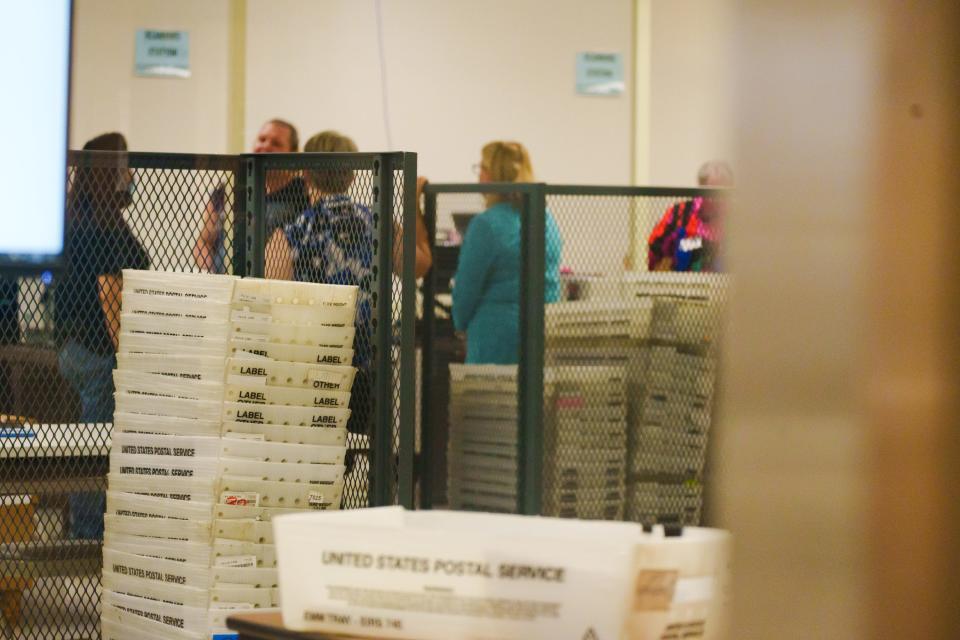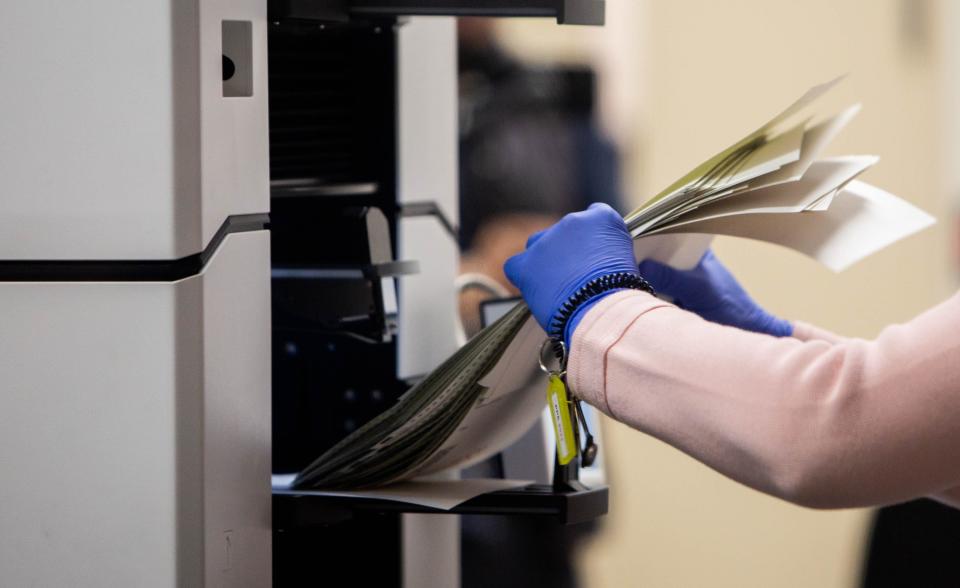Count 'em up: What to know about how your vote gets tallied in Arizona elections
Every election year, officials across Arizona are tasked with counting millions of ballots and tallying results in hundreds of contests.
The process is complex and can take days or even weeks from start to finish. Election workers transport ballots back to their offices, verify voters' identities, count ballots and report results to an eager public.
Here's an overview of how your vote gets counted.

Step 1: Transporting ballots
Before your vote can be tallied, it must get to the right place.
Your ballot ultimately ends up at your county's election headquarters. But some ballots have a longer path than others to get there.
Many voters return their early ballots by mail. In some large counties, bipartisan teams pick up ballots each day from regional mail-sorting centers. In rural counties, election officials often have to wait for ballots to be transported to those centers, and then shipped to their door.
Other ballots are transported from secure drop boxes and in-person polling sites by bipartisan teams.
Step 2: Verifying the vote
In Arizona, those voting in person must show identification at the polls.
Early ballots go through a different process called signature verification in which trained election officials look at an image of your signed affidavit and compare it to up to three of your other signatures on file.
The comparison signatures can come from your voter registration forms, in-person roster signatures or early voting affidavits from previous elections. Usually, election officials will look at the most recent signatures they have for you.
If election officials are unsure that your signature matches with other signatures on file, a manager will review all of the signature samples that the Elections Department has in your file.
If they determine your signature does not match, a specialized team at the Elections Department will call you to make sure that you signed the affidavit. That's why there is a place for your phone number on your early ballot envelope — so that if elections staff have questions, they can get in touch.
Once your signature is successfully verified, a bipartisan team separates your ballot from its early ballot envelope. It is then officially ready to be counted.

Step 3: Tallying with tabulators
Vote-counting machines — or, more officially, tabulators — are the equipment that count your ballot. They are used in more than 90% of election jurisdictions in the U.S. and all of Arizona's 15 counties.
There are several different brands of tabulators used across the state, but all must be certified according to state and federal law. Currently, the companies with certified tabulators in Arizona include:
Unisyn
Dominion
ES&S
Diebold
Sequoia
The machines are tested before and after every election. A pre-election test ensures the tabulators are counting ballots accurately. Later, post-election tests to verify no changes occurred on the machines.
County election officials also implement other safeguards:
Tabulators are not connected to the internet.
Tabulation rooms across the state are generally access-controlled, so only people working to tally ballots can enter
Political party observers are invited to watch the tabulation process
Many counties offer livestreams of tabulation so the public can view the process
In all counties, tabulator accuracy is confirmed by a bipartisan hand count audit of ballots cast at 2% of voting precincts immediately after the election. Political party observers randomly select the precincts. A sample of early ballots is also reviewed.
Most ballots in the state are processed on tabulators located inside each county's election headquarters.
But in some counties, voters insert their ballots into on-site tabulators at in-person voting locations. Those machines are subject to all of the same testing as tabulators inside county election centers, and early ballots and provisional ballots are still processed on central tabulators.

Step 4: For some, a bipartisan examination
Sometimes, voters don't completely fill out the ovals on their ballot or create stray marks on the paper.
That can make it difficult for tabulators to read the ballot and prompts a process called adjudication, in which bipartisan teams examine ballots to determine voter intent.
If the team can determine how a voter intended to cast their vote, it'll still count. But adjudication takes longer than counting with tabulators. If a large number of ballots must be adjudicated, it can slow down results.
Step 5: Reporting results
By law, county election officials must wait until five calendar days after the election to count ballots with missing or mismatched signatures.
They also must process early ballots dropped off on Election Day. Those ballots need to go through the signature verification and tabulation processes.
So, determining tight races can take some time. State law gives county election officials 20 days to fully wrap up counting.
Still, you can usually expect to see the first batch of unofficial election results about an hour after the polls close on election day. Election officials tally votes in this order:
Early ballots cast in person or by mail leading up to the election
Ballots cast in person on election day
Early ballots dropped off immediately before and on election day
Provisional ballots
Sasha Hupka covers county government and election administration for The Arizona Republic. Do you have a tip to share on elections or voting? Reach her at [email protected]. Follow her on X, formerly Twitter: @SashaHupka. Follow her on Instagram or Threads: @sashahupkasnaps.
This article originally appeared on Arizona Republic: Does your ballot count? How votes get tallied in Arizona elections
